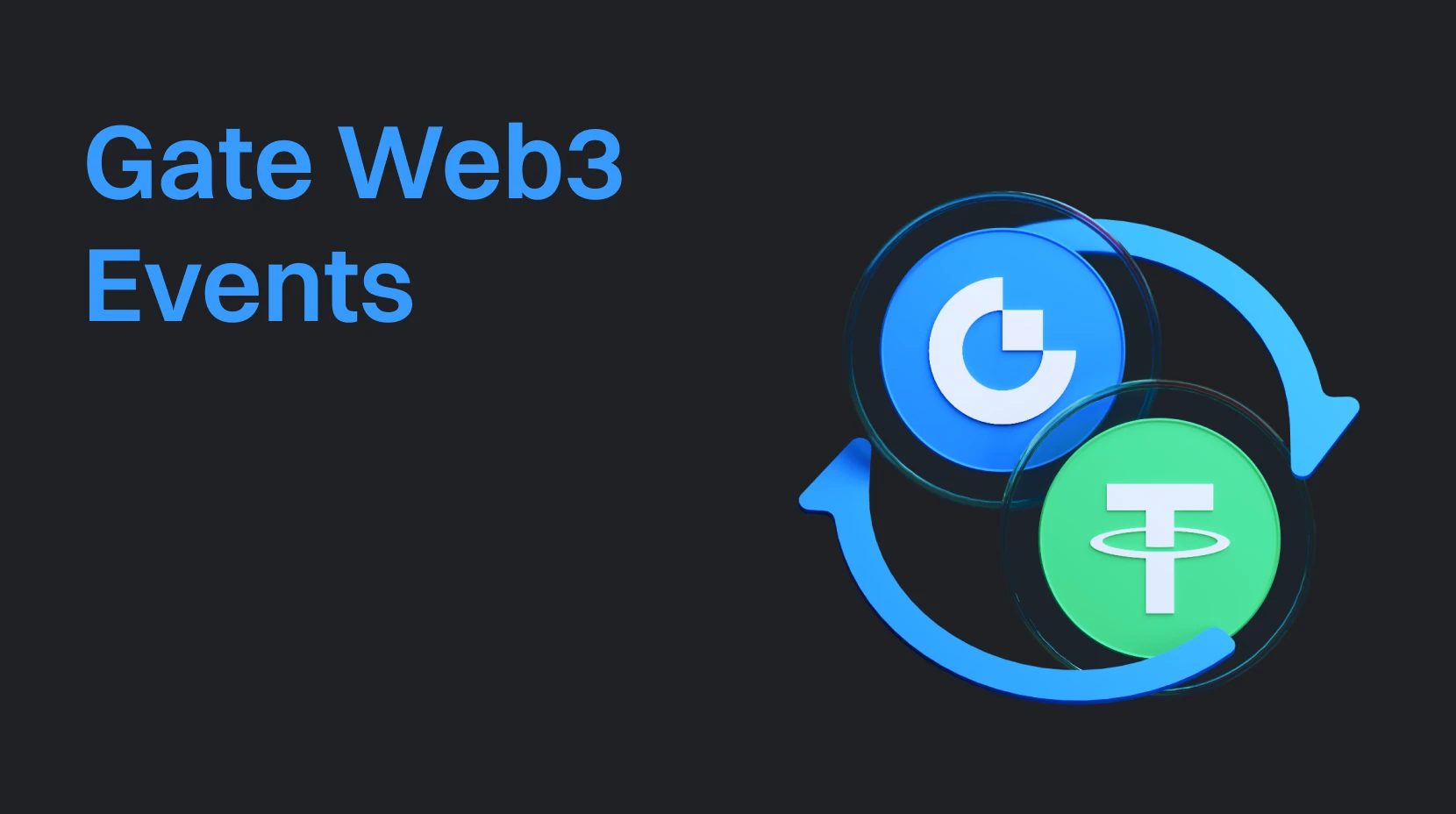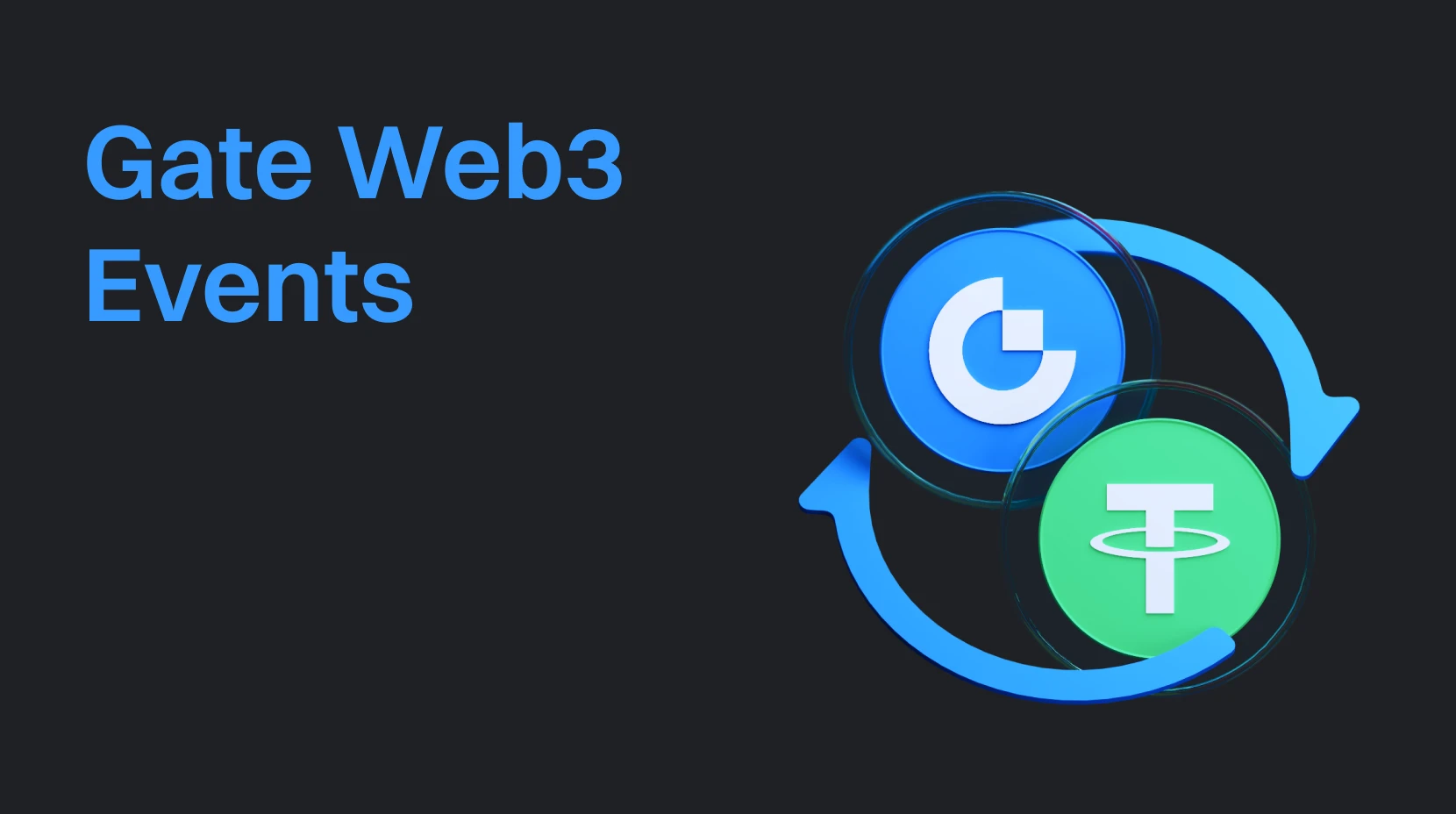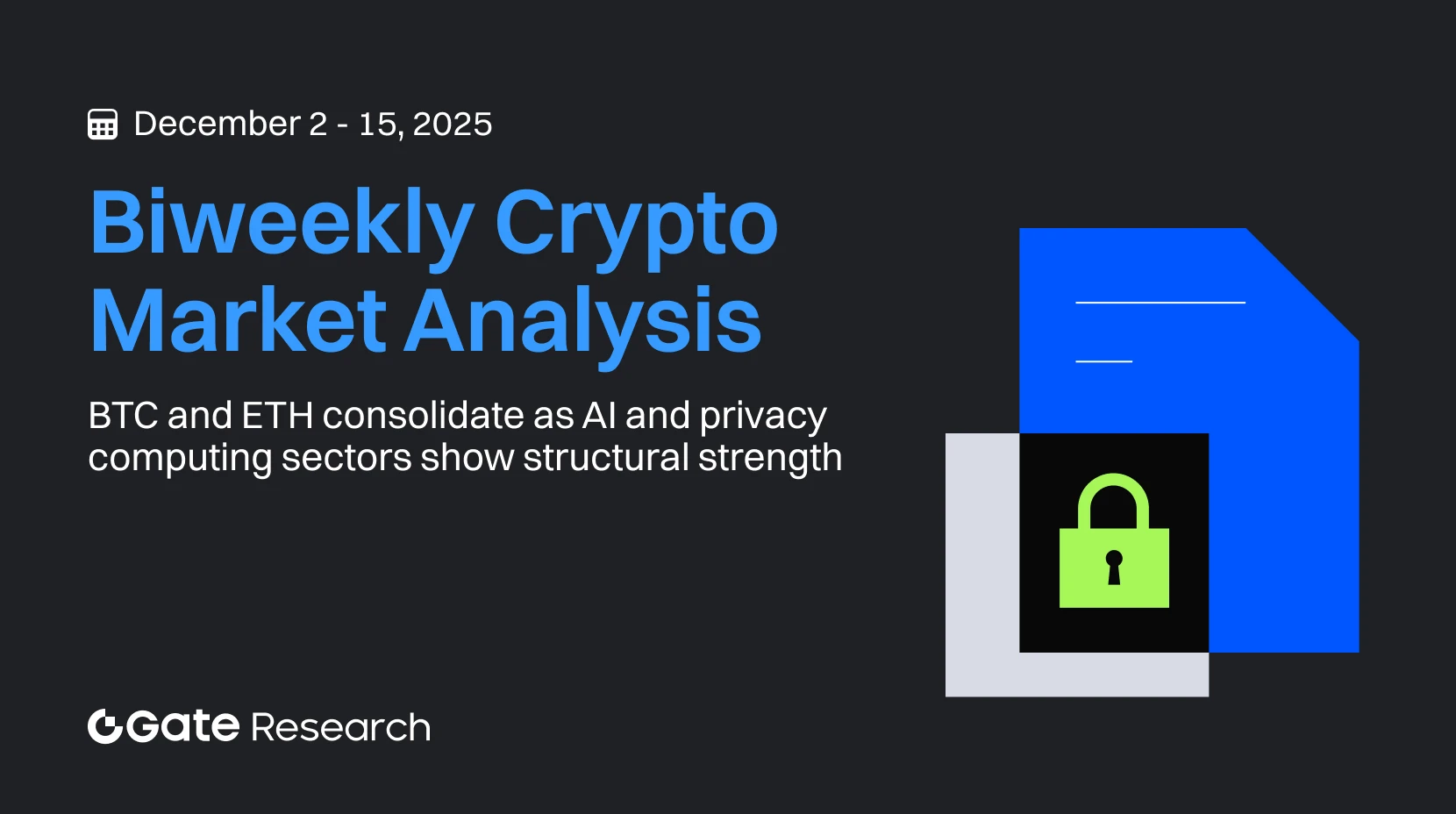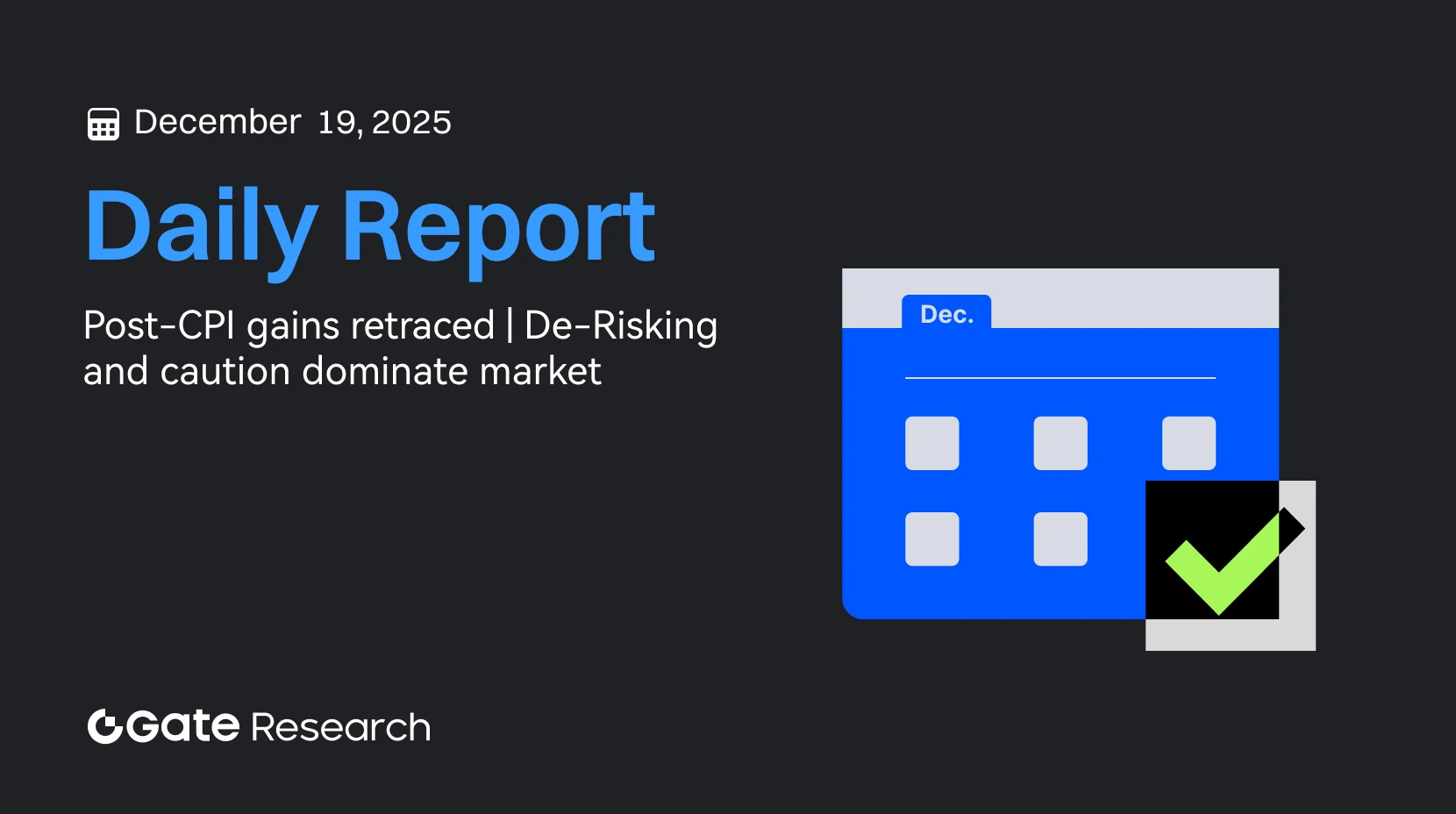Темы криптомира
Статьи (8132)

Новичок
Призовой фонд Gate Swap 3 000 000 GM уже открыт. Получайте базовую доходность и участвуйте в ежедневных дополнительных airdrop GM.
Gate Swap совместно с сообществом GM начал масштабную кампанию по привлечению ликвидности. Призовой фонд 3 000 000 GM теперь открыт официально. GM — популярный токен сообщества, обладающий огромным потенциалом.
12-19-2025, 10:16:19 AM

Новичок
Gate Web3 BountyDrop: Примите участие в airdrop SCOR и получите шанс разделить 600 000 SCOR
Gate Web3 BountyDrop — универсальный сервис, собирающий ведущие проекты airdrop и обеспечивающий быстрый доступ к интерактивным заданиям. Пользователи могут просматривать новые проекты airdrop, знакомиться с их описанием, этапами взаимодействия, сроками участия, а также переходить на страницы проектов по соответствующим ссылкам для участия.
12-19-2025, 9:05:47 AM

Средний
Цифровые банки уже не ведут традиционный банковский бизнес. Основные возможности для заработка сейчас связаны со стейблкоинами и подтверждением личности.
В статье анализируются модели Revolut и Nubank, а также выделяются три направления получения прибыли криптобанками: начисление процентов на резервы стейблкоинов, распределение доходов от платежных транзакций и права на выпуск инфраструктурных продуктов.
12-19-2025, 8:04:53 AM

Средний
Перед тем как принимать участие в любом публичном фонде, не ознакомившись с деталями, обязательно прочитайте эту статью.
В статье анализируются успехи MegaETH и Plasma, а также провалы Monad, что демонстрирует высокие риски и сложности бездумного копирования этих моделей. Приведены практические советы, позволяющие избежать роли exit liquidity для инсайдеров и помогать инвесторам объективно оценивать FDV (Fully Diluted Valuation) и полностью разводненную рыночную капитализацию. Эти рекомендации особенно полезны для розничных инвесторов, которые действуют на бычьем рынке под влиянием FOMO.
12-19-2025, 8:01:28 AM

Средний
Я изучал искусственный интеллект, после чего стал исследователем в OpenAI
В отличие от обычного механического запоминания, этот подход помогает пользователям ИИ избежать типичных проблем, таких как когнитивный застой, за счет универсальной пятишаговой методики. Он позволяет неспециалистам быстро осваивать новые компетенции, учитывает тенденции развития рынка труда в эпоху индивидуальных компаний и предлагает четкие, практические рекомендации.
12-19-2025, 7:57:59 AM

Средний
Почему биткоин снизился перед тем, как Банк Японии повысил процентную ставку?
В статье представлены исторические данные и ончейн-данные, что позволяет провести точный анализ того, как нарратив о цифровом золоте утратил свою актуальность под влиянием макроэкономических факторов.
12-19-2025, 7:50:15 AM

Средний
Чего ждать от Bitcoin в начале 2026 года: сохранятся ли сезонные тенденции?
Ключевым фактором динамики рынка Bitcoin в первом квартале 2026 года станет не преобладающий новостной фон, а именно доступ к капиталу. В статье анализируется реальный приток новых средств, который традиционные каналы капитала могут обеспечить после того, как Vanguard и банки ослабили ограничения на инвестиции в криптовалюты. Кроме того, переосмысляется надёжность сезонных трендов Bitcoin — рассматривается, будет ли следующий рост связан с восстановлением рыночных настроений или станет результатом математических эффектов ребалансировки институциональных портфелей.
12-19-2025, 7:46:04 AM

Средний
От искусственного интеллекта до Labubu, от золота до криптовалют: почему спекулятивные пузыри появляются во всех сферах
ИИ, золото, криптовалюты, мем-коины и даже плюшевые Labubu стали объектами новой волны спекуляций. В статье на основе истории финансовых пузырей анализируется, как экономика внимания, коллективная психология и глобальные синхронизированные нарративы меняют принципы формирования цен на активы. Автор показывает: сегодня спекуляции уже не ограничиваются финансовыми рынками, а превратились в структурный феномен, который выходит за пределы классов активов и культурных границ.
12-19-2025, 7:39:45 AM

Средний
BTC: обновление данных сети
Рынки рассматривают снижение ставок Федеральной резервной системы и возобновление покупок краткосрочных казначейских облигаций как «QE-lite». Но действительно ли это стало переломным моментом для рискованных активов? В статье анализируются финансовые условия, кривая доходности и структура дюрации, чтобы показать, почему действующая политика пока не является полноценным финансовым подавлением. Затем автор связывает глобальные торговые дисбалансы и дилемму Триффина, рассматривая средне- и долгосрочные аргументы в пользу Bitcoin как несуверенного средства сбережения при возможном ослаблении доллара США и определяет, где может наступить настоящий переломный момент.
12-19-2025, 7:37:07 AM

Средний
Дебаты вокруг ETH: можно ли считать его криптовалютой?
Ethereum накапливает денежную премию, однако остается спорным, удалось ли ему действительно выйти из тени Bitcoin. В статье анализируются динамика ETH/BTC, потоки средств в ETF, накопление Ethereum на балансах казначейств компаний и изменения в ключевых ончейн-показателях. На этом основании делается вывод, что сейчас Ethereum скорее отражает высокобетовую стратегию на Bitcoin, чем является самостоятельным денежным активом. Также рассматриваются основные ограничения и возможные пути монетизации Ethereum в преддверии 2026 года.
12-19-2025, 7:27:48 AM

Продвинутый
Gate Research: Gate Research: BTC и ETH консолидируются, а сектора AI и Privacy Computing демонстрируют структурную устойчивость
С 2 по 15 декабря 2025 года мировые рынки развивались разнонаправленно. Хотя Федеральная резервная система снизила ставку, как ожидалось, разногласия по дальнейшей политике и ожидания паузы в смягчении ограничили интерес к рисковым активам. BTC и ETH оставались в фазе консолидации, а активы с высоким бета-коэффициентом демонстрировали лучшую динамику. Токены, связанные с AI-приложениями и приватными вычислениями, показали заметную силу, тогда как новые публичные блокчейны и стейблкоины уступали в динамике. Движение объёмов и цен было фрагментированным: рынок по-прежнему ориентирован на краткосрочные сделки, хотя структурные возможности сохраняются. Сегменты, такие как сетевые узлы, стимулируемые тестовые сети и системы поощрения сообщества, продолжали развиваться: проекты ускоряли привлечение первых пользователей через эирдропы и балльные стимулы. В статье представлены ключевые варианты участия, которые позволяют пользователям занять позиции с минимальными затратами и получить потенциальную выгоду от будущих
12-19-2025, 6:20:35 AM

Продвинутый
 Gate Research: рост после публикации данных по индексу CPI полностью нивелирован | давление на продажу опционов отражает тенденцию к снижению рисков
Gate Research: рост после публикации данных по индексу CPI полностью нивелирован | давление на продажу опционов отражает тенденцию к снижению рисков
Gate Research: 19 декабря криптовалютный рынок показал синхронное снижение, при этом интерес к риску продолжил снижаться. BTC после краткосрочного роста на фоне публикации данных CPI быстро скорректировался, сохранив медвежью структуру; ETH также оставался под давлением и консолидировался в своем диапазоне. Основные настроения рынка — активное сокращение рисков и ожидание переоценки. В ближайшей перспективе рынок может перейти в фазу бокового движения и консолидации. JELLYJELLY и NBLU укрепились вопреки общей динамике благодаря спекулятивному спросу, а IR вырос на фоне новых листингов и активности, связанной с биржами. К основным событиям относятся: скорое истечение опционов на BTC на сумму 23 млрд долларов; заявка Lido DAO на бюджет экосистемы в 60 млн долларов для ускорения трансформации; прогноз JPMorgan о достижении общей капитализации рынка стейблкоинов к 2028 году примерно 500–600 млрд долларов.
12-19-2025, 6:11:42 AM

Продвинутый
Gate Research: рост после публикации данных по CPI полностью нивелирован | на рынке доминируют стратегия снижения рисков и осторожность
Ежедневный отчет Gate Research: 19 декабря на криптовалютном рынке наблюдалась широкая коррекция после первоначального роста, вызванного публикацией индекса потребительских цен, при этом интерес к рисковым активам продолжал снижаться. BTC кратковременно превысил отметку 89 000 $, затем откатился, сохранив медвежий настрой и торгуясь на более низких уровнях. ETH демонстрировал слабую попытку восстановления, консолидируясь под давлением в диапазоне 2 800–3 000 $. Интерес к альткоинам остается низким, участники рынка сосредоточены на снижении рисков и защитных стратегиях. Среди актуальных тем выделились токены с низкой капитализацией, такие как JELLYJELLY и NBLU, которые укрепились на фоне спекулятивного спроса, а IR вырос благодаря новым листингам и активности на биржах. Ключевыми переменными, влияющими на краткосрочные и среднесрочные ожидания, стали предстоящее истечение опционов BTC на сумму 23 млрд $, заявка Lido DAO на выделение 60 млн $ для развития экосистемы и консервативный прогноз JPMorgan относительн
12-19-2025, 5:59:07 AM

Новичок
Годовой итоговый отчет Gate опубликован: аналитический обзор криптосезона пользователей на основе данных
В условиях высокой волатильности и устойчивого структурного роста крипторынка в 2025 году реальные торговые действия пользователей становятся основным инструментом для анализа изменений на рынке. Gate недавно официально представила итоговый отчет за 2025 год, где подробно рассмотрены криптопути пользователей на основе анализа временной динамики и ключевых поведенческих данных по торговой активности и участию в продуктах за прошедший год.
12-19-2025, 2:37:34 AM

Новичок
Gate Leveraged ETF: увеличение доходности на рынке без применения фьючерсов
Левериджированные ETF сегодня используются не только для диверсификации, но и как инструменты для реализации продвинутых стратегий. Фиксированное соотношение левериджа — например, 3x или 5x — достигается за счет позиций по бессрочным контрактам. Эта схема дает возможность усиливать движение цен активов при спотовой торговле, при этом необходимость в займах или контроле маржи отсутствует, а риск ликвидации существенно снижается.
12-19-2025, 1:49:17 AM
Откройте мир криптовалют — подпишитесь на Gate, чтобы открыть новые перспективы
